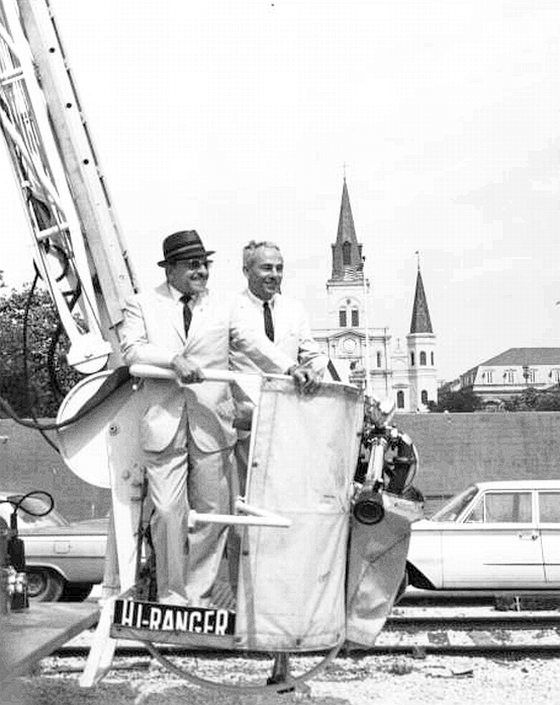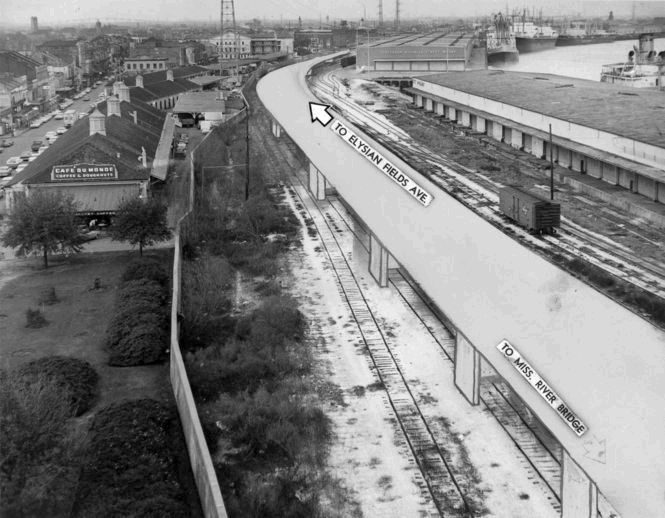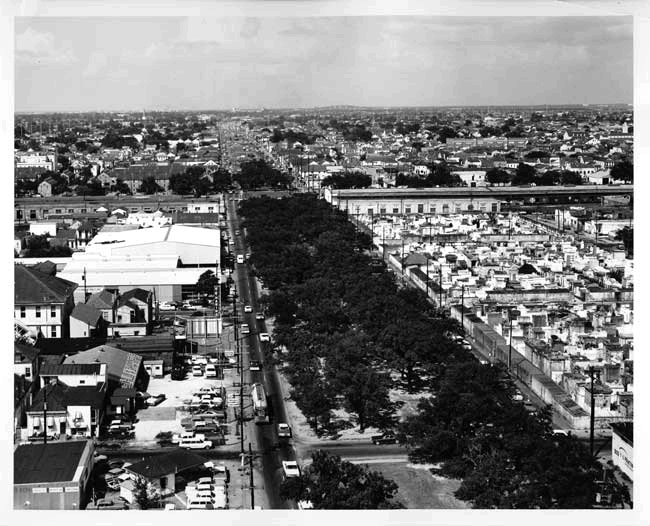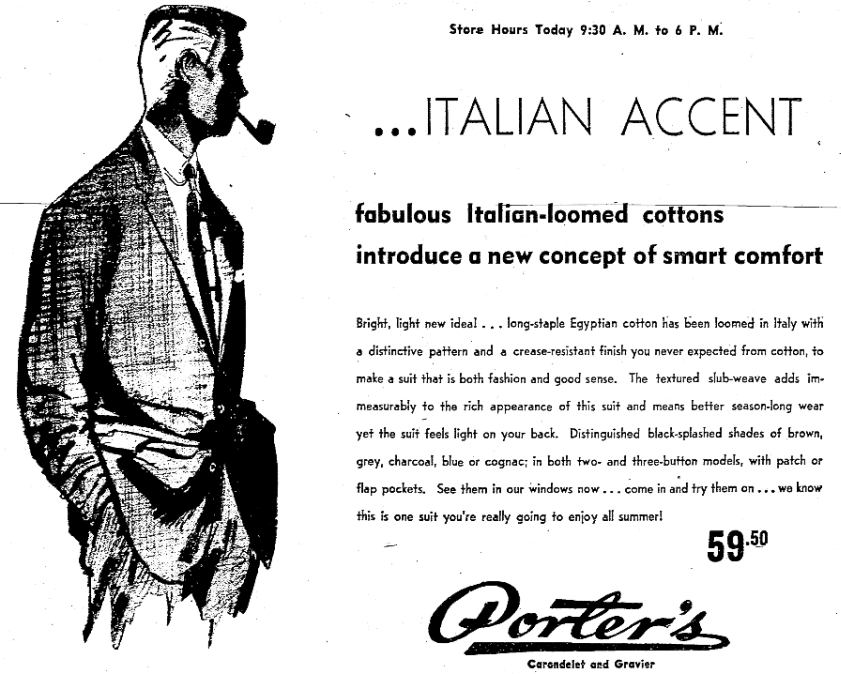|
Today in New Orleans History |
|
|
April 28


 http://nutrias.org/~nopl/exhibits/nord/106.jpg Ida Weis Friend speaks from the stage of the NORD Traveling Theater at the April 28, 1948
dedication of new lights at the Bunny Friend Playground in the upper 9th Ward. Mrs. Friend was a civic and social leader in
New Orleans, who was awarded (among other honors) the Times-Picayune Loving Cup in 1946. When her 18-year-old son, Henry (“Bunny”),
died of pneumonia in 1924, she donated funding for the purchase of a playground in his memory, along with money for its initial
maintenance. Once the lights went on that night, on-lookers watched an Irish musical revue by NORD’s Traveling Theater
troupe and a softball game between the playground team and the Sauro Stars. Mayor Morrison threw out the first pitch.
 

To receive an update for each day in New Orleans
history, join our facebook page
- Today in New Orleans History
The Proposed Riverfront Expressway New Orleans Public Library photo by Joseph C. Davi The Times-Picayune graphic of the proposed Riverfront Expressway, Feb. 15, 1965. The
Louisiana Highway Department (predecessor to the Louisiana Department of Transportation and Development) hired Robert Moses
as a consultant in 1946 to examine New Orleans' traffic and propose solutions. His proposals included a 40-foot high, 108-foot
wide freeway running south 3.5 miles from I-10 exit 237 near Elysian Fields Ave, following Elysian Fields at ground level
to the riverfront, and continuing southwest, elevated to the US 90 Mississippi Bridge approach. There it would turn southwest
and run to a point near Lafayette Street, where ramps would connect to the Greater New Orleans Bridge (U.S. Highway 90 Business).
An extension, never part of the Interstate Highway System, was to continue west to meet the Earhart Expressway (Louisiana
Highway 3139).It was not added to the Interstate Highway System as an urban route in the 1950s due to a lack of funding,
but by 1961 it was being considered for addition. One proposal to gain the mileage was to shift Interstate 10 to the Riverfront
route, but eventually, in 1964, the Interstate 420 bypass of Monroe was removed from the Interstate System and the mileage
transferred to the Riverfront Expressway project. It was officially added to the Interstate Highway System on October
13, 1964, as Interstate 310. From 1964 to 1969, it remained designated as Interstate 310. Known
as the Vieux Carré Riverfront Expressway, the plan was ill-received by New Orleanians who fought to prevent its construction
through the French Quarter. The voice of the people was heard and the elevated expressway was never built. The
freeway was removed from the Interstate System on August 22, 1969. Its mileage was used in part for a new southern bypass
of New Orleans—Interstate 410—which was itself never completed However, one component of the original
plan, a six-lane tunnel, 690 feet long by 98 feet wide, under the Rivergate Convention Center (now Harrah's New Orleans Casino)
was built and is presently used for valet parking. While the French Quarter was spared from the intrusion of the interstate highway, Treme was not. The width
of Claiborne Avenue provided the second most convenient route for its construction. The
opposition of the largely African-American residents of Treme did not overcome the alternate route of an elevated expressway
there. The lush oak trees (pictured here in August 1966 were destroyed to make way for the highway and the neighborhood
was changed forever. (See also October 12).
Jacques Philippe Villere was born in St. John's Parish, Louisiana on April 28, 1760.
His education was attained in France at the expense of Louis XVI. Villere served in the French Army, as first lieutenant
of artillery, stationed in Saint Domingue. After returning to his native state, he served as a major general in the territorial
militia and fought in the Battle of New Orleans. Villere entered politics in 1812, serving as a member of the first State
Constitutional Convention. He was elected governor by a popular vote on July 1, 1816, and then confirmed by the legislature.
This was the election procedure according to the 1812 State Constitution. Villere was sworn into office on December 17,
1816. During his tenure, legislation pertaining to the Black Code was sanctioned, the death penalty was imposed on anyone
who killed a person in a duel, limitless immigration was banned, and negotiations between the American and Creole populations
were conducted. After completing his term, Villere left office on December 18, 1820. Four years later, he ran unsuccessfully
for reelection to the governor's office. He later served as a presidential elector in 1826. Governor Jacques P. Villere
passed away on March 7, 1830. According to Buddy Stall, Villere, as governor, gave the shortest inauguration speech on Louisiana
record. Sources: Dawson III, Joseph G. The Louisiana Governors: From Iberville to Edwards. Baton Rouge: Lousiana State University
Press, 1990. From http://www.nga.org/cms/home/governors/past-governors-bios/page_louisiana/col2-content/main-content-list/title_villere_jacques.html |
|
|

To receive an update for each day in New Orleans history,
join our facebook page - Today in New
Orleans History.
Analytics |
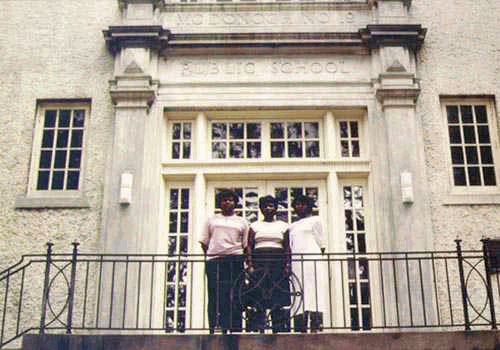
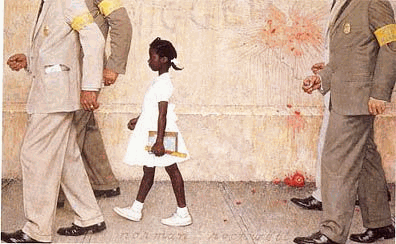 Most New Orleanians, in fact most Americans, know of Ruby Bridges who, as a six-year-old first-grader, climbed the long stairs
to the entrance of William Frantz Elementary School at 3811 North Galvez Street on the day the city's schools ended racial
segregation while some of its citizens displayed vehemently and cruelly some of the worst traits in human nature. Norman Rockwell
captured the moment when U.S. Marshals accompanied her amid hate-filled screams of adults and children alike.
Most New Orleanians, in fact most Americans, know of Ruby Bridges who, as a six-year-old first-grader, climbed the long stairs
to the entrance of William Frantz Elementary School at 3811 North Galvez Street on the day the city's schools ended racial
segregation while some of its citizens displayed vehemently and cruelly some of the worst traits in human nature. Norman Rockwell
captured the moment when U.S. Marshals accompanied her amid hate-filled screams of adults and children alike. 